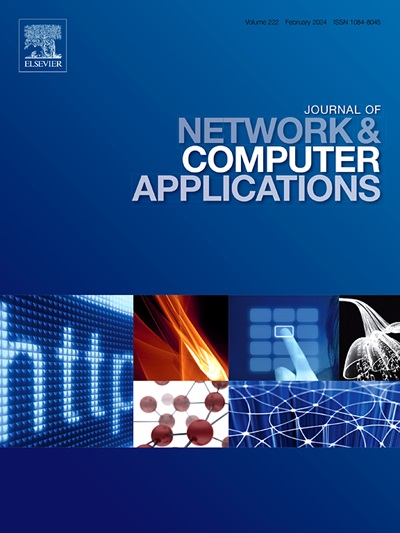Hierarchical multi-scale spatio-temporal semantic graph convolutional network for traffic flow forecasting
IF 8
2区 计算机科学
Q1 COMPUTER SCIENCE, HARDWARE & ARCHITECTURE
引用次数: 0
Abstract
Accurate traffic flow forecasting is essential for various traffic applications, such as real-time traffic signal control, demand prediction, and route guidance. However, the increasing complexity and non-linearity of big data in the traffic domain pose a challenge for accurate forecasting, necessitating powerful models. This paper proposes a Spatio-temporal model for traffic flow prediction based on Graph Convolutional Neural Network (GCN) and Convolutional Neural Networks (CNN). The hierarchical architecture of Spatio-temporal modeling is utilized to consider multi-scale Spatio-temporal dependencies. We evaluate the proposed model using three real-world datasets, including METR-LA, PeMS04(S), and PeMS04(L). Our experiments demonstrate that the model captures comprehensive spatiotemporal correlations with multi-scale semantics, outperforming features extracted from single domains and non-multi scales. Furthermore, the proposed model is powerful for long-term prediction. We also conduct ablation and architecture studies to highlight the importance of model architecture for Spatiotemporal feature extraction. Our proposed Spatio-temporal model based on GCN and CNN offers a promising approach to traffic flow forecasting in complex traffic scenarios.
层次化多尺度时空语义图卷积网络交通流预测
准确的交通流预测对于各种交通应用至关重要,例如实时交通信号控制、需求预测和路线引导。然而,交通领域大数据日益增长的复杂性和非线性给准确预测带来了挑战,需要强大的模型。本文提出了一种基于图卷积神经网络(GCN)和卷积神经网络(CNN)的交通流时空预测模型。利用时空建模的层次结构来考虑多尺度时空依赖关系。我们使用三个真实世界的数据集,包括met - la、PeMS04(S)和PeMS04(L)来评估所提出的模型。我们的实验表明,该模型捕获了多尺度语义的综合时空相关性,优于从单域和非多尺度提取的特征。此外,该模型具有较强的长期预测能力。我们还进行了消融和架构研究,以突出模型架构对时空特征提取的重要性。本文提出的基于GCN和CNN的时空模型为复杂交通场景下的交通流预测提供了一种很有前景的方法。
本文章由计算机程序翻译,如有差异,请以英文原文为准。
求助全文
约1分钟内获得全文
求助全文
来源期刊

Journal of Network and Computer Applications
工程技术-计算机:跨学科应用
CiteScore
21.50
自引率
3.40%
发文量
142
审稿时长
37 days
期刊介绍:
The Journal of Network and Computer Applications welcomes research contributions, surveys, and notes in all areas relating to computer networks and applications thereof. Sample topics include new design techniques, interesting or novel applications, components or standards; computer networks with tools such as WWW; emerging standards for internet protocols; Wireless networks; Mobile Computing; emerging computing models such as cloud computing, grid computing; applications of networked systems for remote collaboration and telemedicine, etc. The journal is abstracted and indexed in Scopus, Engineering Index, Web of Science, Science Citation Index Expanded and INSPEC.
 求助内容:
求助内容: 应助结果提醒方式:
应助结果提醒方式:


